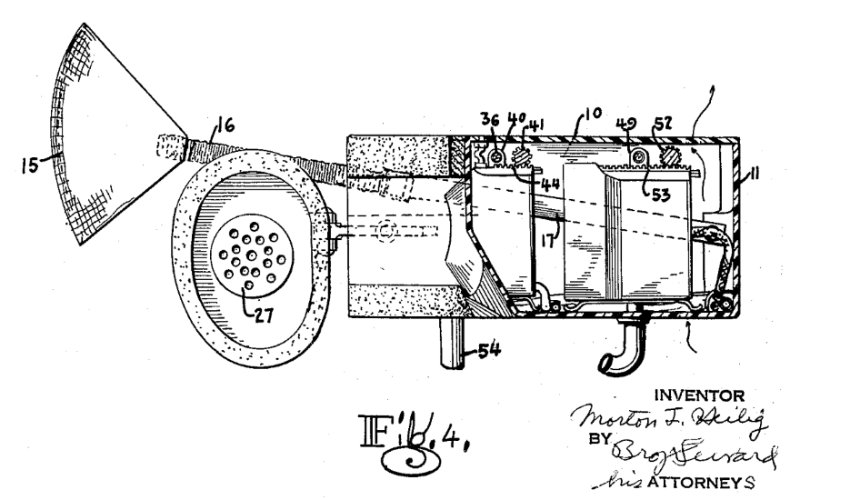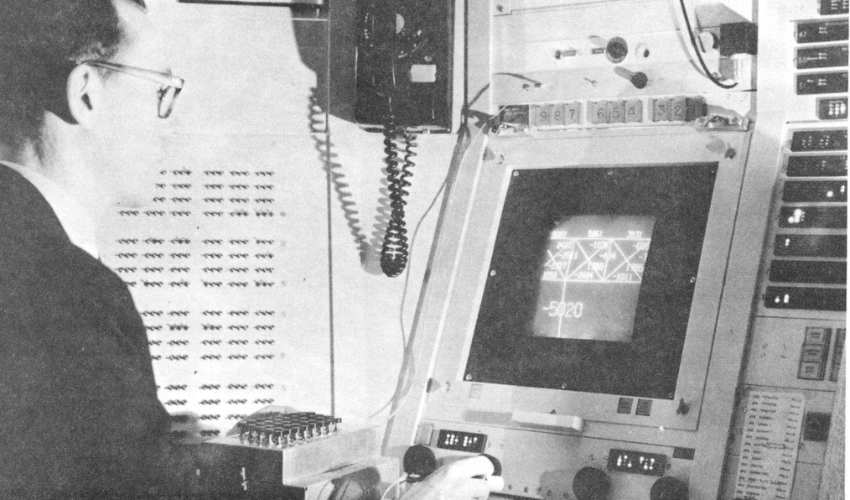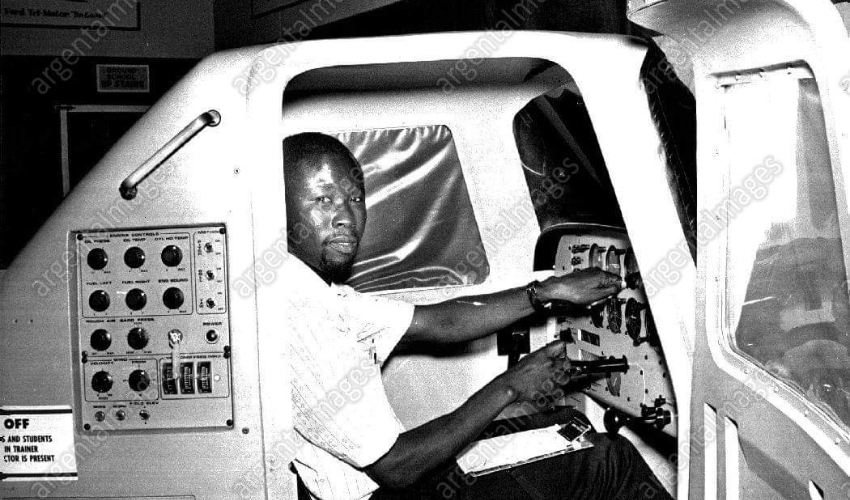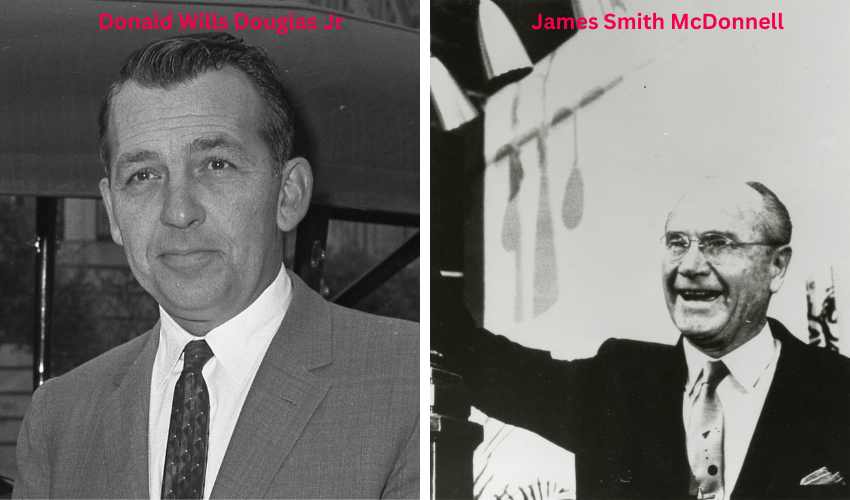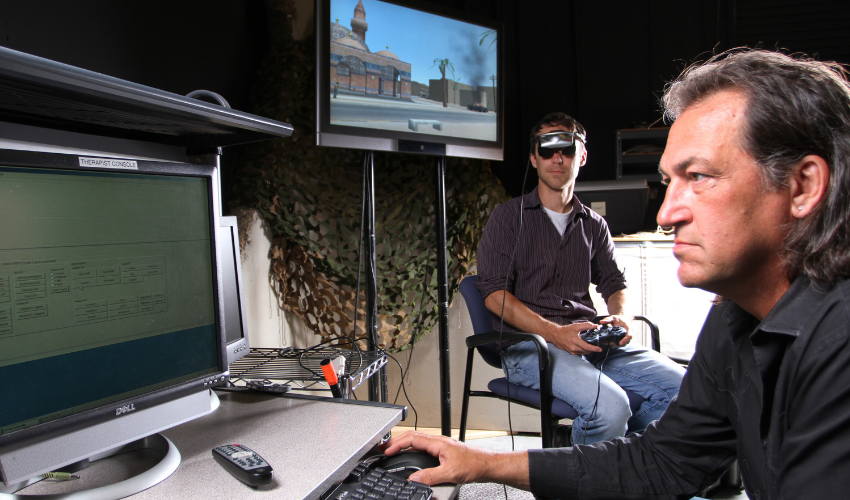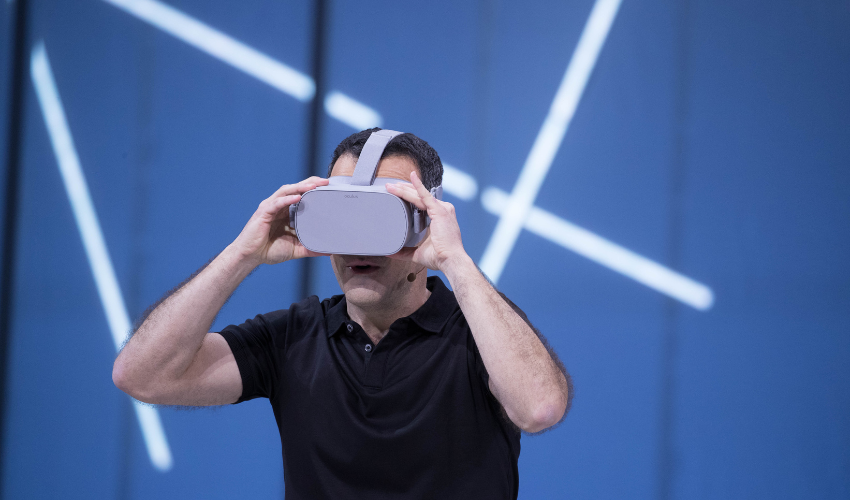The Fascinating Evolution of Virtual Reality History (2025)
Share it
The history of virtual reality is a clear timeline of bold experiments, strange prototypes, and major breakthroughs. From 19th-century panoramas to modern immersive headsets, each milestone pushed the limits of how we learn, play, and connect. This guide walks you through VR history step by step—decade by decade.
Are you fascinated by the brief evolution of virtual reality and all its incredible possibilities?
What if you could step into another world, one as real as your own? Virtual reality promises this.
It has taken off in entertainment, gaming, education, and much more in the past few decades.
It can be used for interactive experiences that are captivating, highly informative, and educational.
But where did it come from? This blog post is for you if you want to explore its history and learn about the timeline of events in virtual reality.
TL;DR
Explore the exciting world of arcade fun and blocky graphics as we delve into the captivating story of virtual reality.
Take a trip down the memory lane of VR’s past, from its initial hiccups to astounding advancements, and peek into the future ahead.
Amazing what humans can do ✨

The telephone is virtual reality in that you can meet with someone as if you are together, at least for the auditory sense.
Ray Kurzweil
Virtual Reality Timeline: Key Milestones (1838–2025)
- 1838 – Stereoscopes bring 3D depth to flat images
- 1929 – Link Trainer becomes the first flight simulator
- 1956 – Morton Heilig’s Sensorama introduces multi-sensory cinema
- 1960–1968 – Telesphere Mask and Sword of Damocles create early VR headsets
- 1970s–1980s – Videoplace, Sayre Glove, and digital simulators expand VR research
- 1990s – Sega, Nintendo, and VR arcades push VR into mainstream culture
- 2007–2016 – Google Street View, Oculus Rift, and PSVR kick-start modern VR
- 2019–2025 – Standalone headsets like Quest make VR more accessible
Early Steps Towards Immersion
19th-Century Virtual Reality History: Early Origins of VR
Step into the realm of massive paintings and 3D viewers—think of it like the foundation that the 1800s set for today’s Virtual Reality tech.
We’re going to explore the clever gadgets that kicked off the whole VR craze, taking people on journeys way past the limits of where they actually were.
Early Steps Towards Immersion
Picture people taken right into the old wars, with a full-circle view and all kinds of things to see, hear, and feel.
Remember those old-timey gadgets called stereoscopes? They made simple pictures look like they were alive and helped people get really interested in what it feels like to be part of a scene.
These cool devices from the past helped pave the way for the virtual reality we have today. They were the very first steps in making it hard to tell what’s real from what’s just in our heads.
Panoramic Paintings
Panoramic View of the Palace and Gardens of Versailles as an example of what a panoramic painting would have felt like
In the 1800s, wide-angle artworks called panoramic paintings were a first step toward what we now know as Virtual Reality (VR).
These big artworks wrapped around the viewer, offering a view that covered every angle, making them feel like they were in a new place, much like today’s VR. At the heart of these paintings, spectators would get lost in a make-believe world of depth and space, pointing to the engaging worlds future technology would create.
A famous work of this type is “The Battle of Borodino” by Franz Roubaud. This painting pulls you into the intense 1812 fight from Napoleon’s invasion of Russia. Standing in the middle, you can almost hear the roaring cannons and smell the burning gunpowder, as if stepping back in time.
In a similar way, “The Racławice Panorama,” found in Wrocław, Poland, takes you back to the 1794 Battle of Racławice from the Kościuszko Uprising. When you step inside its round exhibit space, the scenes of combat immerse you totally, echoing the experience of stepping into a scene created by VR today.
Stereoscopes
A big step forward for virtual reality came about when the stereoscope was created in the 1800s.
The stereoscope, made by Sir Charles Wheatstone in 1838, let people look at two different pictures, one with each eye. This tricked the brain into seeing depth, making flat pictures seem real and three-dimensional like never before.
The Holmes Stereoscope, released by Oliver Wendell Holmes Sr. in 1861, became a popular hand-held device that made these 3D images easy for everyone to enjoy.
The Keystone View Company started in 1892, turned into the biggest maker and seller of these stereoscopic pictures. They showed all sorts of scenes, bringing exciting and life-like experiences right into people’s homes. This early peek into virtual reality sparked an interest in believable, interactive experiences that keep on inspiring today’s VR innovations.
Key Takeaways
- In the 1800s, people developed some of the first ideas leading to today’s virtual reality, using huge round paintings and stereoscopes.
- These big paintings let viewers look around in all directions, and stereoscopes made pictures look like they had real depth, just like in 3D movies.
- This early stuff was really exciting for people back then and helped inventors think up the cool VR tech we have now.
20th-Century Virtual Reality History: First Simulators and Headsets
Moving into the 1900s, our steps forward in technology led us closer to making virtual reality (VR) a real thing. This time started the wave of big innovations that would take VR from just an idea to something people could actually experience.
1929 - First Flight Simulator
We saw a big step towards making virtual experiences that felt real when the first flight simulator came out in 1929.
This game-changing invention, known as the Link Trainer, was a huge moment for virtual reality. Created by Edwin Link, an innovator in teaching pilots, he built it mostly from bits of organs and pianos from his dad’s business. The goal was to train pilots in a safe and effective way.
The Link Trainer created an environment that felt like flying a real plane, giving the person flying it important physical and visual clues. This basic type of virtual reality was key in teaching pilots how to fly. Plus, it set the stage for the complex virtual reality tools used in all kinds of work today.
1956 - Morton Heilig's Vision
Morton Heilig patent 1960
Picture yourself not just watching a movie but feeling it with every part of you. That was the bold idea of Morton Heilig, an innovative filmmaker who played a big role in making virtual reality what it is today. In the 1950s, he wrote a book called “The Cinema of the Future,” where he introduced the idea of an ‘Experience Theater.’
Heilig imagined a type of movie theater that could do much more than just show films in flat, two-dimensional images.
He suggested creating a space where everything could feel real—you could see, hear, feel, smell, and maybe even taste parts of the movie.
In 1956, Heilig came up with a special design for this kind of full-body experience. He called it the “Sensorama,” and it came to life in 1962.
1960 - The First VR Head Mounted Display
Virtual reality really began to grow when the first VR headset was made. It was called the “Telesphere Mask” and was created by an inventor named Morton Heilig.
This early kind of VR headset could not interact with users, but it showed 3D images and had a good field of view and sound that seemed to come from the right direction.
In 1968, a big moment came when Ivan Sutherland and his student, Bob Sproull, made the first system that combined virtual reality and augmented reality in a headset.
It was named the “Sword of Damocles” because it looked scary, and it was important because it started both VR and AR.
Even though these first headsets were simple compared to what we have now, they started a trend that led to the advanced virtual reality we can enjoy today.
1961 - First Motion Tracking HMD
In 1961, the path of virtual reality (VR) changed importantly when the “Headsight” system appeared.
It was the earliest head-worn gadget that could follow head movements, made by engineers at Philco Corporation.
The Headsight had magnetic tracking and was connected to a special camera setup.
When the person wearing it moved their head, the machine would notice and change what they saw on the screen.
Mainly, it helped people see risky places from afar.
Even though it wasn’t made for fun and games or sold to everyday folks, the Headsight cleared the way for VR systems that respond to how you move. Today’s VR equipment still uses its basic idea: moving your head can guide you through a digital space. This invention built the groundwork for the motion-sensitive VR fun we have now.
1962 - Sensorama by Morton Heilig
Morton Heilig was already famous for creating the Telesphere Mask. He took another big step in advancing virtual reality by introducing the machine called “Sensorama.”
This device was more than just a way to cover your eyes; it was like a personal cinema that could engage all of your senses, not only seeing and hearing.
Heilig pictured the Sensorama as the next big thing in movies, able to provide experiences that felt just like real life.
The Sensorama could show short movies in 3D with bright colors and add movements, shakes, smells and breezes to make everything feel more alive.
But even though it was a groundbreaking invention, the Sensorama didn’t sell very well because it was expensive to make, and there wasn’t enough money to support it.
Still, Morton Heilig’s creative work on the Sensorama laid important groundwork for what we now see in modern virtual reality tech.
However, because the Sensorama costs so much, not many people can get it. At the same time, new computer graphics developments paved the way for different ways to explore virtual worlds.
1965 - Ivan Sutherland Creates VR on a Computer
Ivan Sutherland operating the Sketchpad system, one of his inventions.
Following the pioneering work of Morton Heilig, another significant figure emerged in the field of virtual reality – Ivan Sutherland.
A computer scientist, and visionary, introduced a revolutionary concept of a “window into a virtual world”.
This concept went beyond the physical constraints of hardware and leveraged the potential of computer graphics for immersive experiences.
1968 - The Sword of Damocles
Ivan Sutherland and his student Bob Sproull in 1968 at Harvard University, created the first head-mounted display system for virtual reality, known as the “Sword of Damocles” due to its formidable look and the way it was hung from the ceiling.
This first primitive virtual reality headset connected to a computer rather than a camera was a major step forward.
It marked the first time computer graphics were used to provide a virtual reality experience, laying the groundwork for the future evolution of VR technologies.
1969 - Artificial Reality Laboratory
Dr. Krueger’s work was featured in popular media, sparking public interest in virtual worlds. Imagine kids playing and interacting with virtual objects without any special equipment.
Myron Krueger introduced a new concept in artificial reality called the “Videoplace.”
Unlike earlier head-mounted displays and flight simulators, the Videoplace didn’t require any equipment.
Instead, it used projectors, video cameras, and on-screen silhouettes to create an immersive interactive environment.
Users could manipulate virtual objects in real-time, laying the foundation for gesture recognition technology.
Krueger’s work marked the onset of a new era where human-computer interaction in artificial reality became possible, dynamic, and intuitive.
The Videoplace was a precursor to modern virtual and augmented reality technologies, bridging the physical and digital realms in creative and expressive ways.
1972 - Digital Flight Simulator
A non-digital flight simulator from 1970.
General Electric (GE) made significant advancements in aviation and virtual reality by creating a digital flight simulator.
GE’s simulator was a game-changer in the world of VR technology, surpassing all previous efforts.
It offered a highly detailed and realistic 3D perspective cockpit view, allowing pilots to interact with the instruments in real-time.
General Electric’s digital flight simulator revolutionized aviation training and became a game-changer in the world of VR technology, paving the way for simulation technology in other fields.
It showcased the immense potential of VR in creating engaging and safe learning environments.
1975 - The Videoplace Evolves
Dr. Myron Krueger further developed his seminal work on Videoplace, ushering in a new chapter in the field of artificial reality.
He introduced a more complex and interactive system that did not require users to wear any specialized headgear or gloves, unlike many other virtual reality systems of that time.
This version of Videoplace was capable of real-time interaction with multiple users, offering a shared space where they could manipulate and interact with virtual objects, fostering a sense of presence and immersion.
It was a pioneering breakthrough that explored the concept of body-responsive environments and laid the groundwork for many future developments in virtual and augmented reality.
The 1975 Videoplace iteration, thus, reinforced Krueger’s vision of the potential of artificial reality in transforming human-computer interaction.
1977 - The Aspen Movie Map
The Aspen Movie Map, developed by a team led by Andrew Lippman at MIT’s Architecture Machine Group, was a groundbreaking project in 1977 that expanded the possibilities of virtual reality.
It served as a precursor to today’s Google Street View by providing an interactive, virtual tour of Aspen, Colorado.
Users could navigate the town’s streets from the comfort of their homes through pre-recorded footage captured using four cameras.
As one of the earliest examples of digitizing a real-world environment for virtual exploration, the Aspen Movie Map showcased the potential of VR for simulating and interacting with the real world.
1977 - Navigable Virtual Worlds at NASA
Building on the concept of virtual exploration, David Em, an artist and technologist at NASA, created the first navigable virtual worlds with the Jet Propulsion Laboratory (JPL).
He used Bresenham’s line drawing algorithm to create these virtual worlds, which could be navigated with a joystick.
This enabled users to explore simulated three-dimensional environments for the first time and laid the foundations for modern VR applications like Google Earth.
1977 - The Sayre Gloves
The Sayre Glove was pivotal, paving the way for today’s advanced hand-tracking systems in VR headsets.
This data glove, created by Daniel J. Sandin and Thomas Defanti, captured hand movements and translated them into digital signals.
Users could interact with virtual environments directly and intuitively.
The Sayre Glove revolutionized VR, leading to today’s advanced hand-tracking systems.
This development exemplifies VR’s continuous evolution and improving user interaction.
1979 - The McDonnell-Douglas HMD
We witnessed another significant advancement with the creation of the first Head-Mounted Display (HMD) by McDonnell Douglas.
The HMD, developed for the military, was designed as a see-through helmet that allowed pilots to view critical flight data while keeping their eyes on the flight path.
This development was critical in the evolution of VR as it underscored the potential of VR technology in high-stakes, real-world applications.
The McDonnell Douglas HMD was an early example of how VR technology could be integrated into daily operational tasks, marking a shift from VR as a tool for simulation and training to a practical solution for complex real-world challenges.
1985 - VPL Research is Founded
The company, founded by Jaron Lanier, was instrumental in bringing virtual reality technology to the public.
VPL Research was a pioneer in the field, becoming the company to sell the first VR headset and gloves, thus making the immersive experience of virtual reality accessible to a much wider audience.
Lanier’s groundbreaking work at VPL Research solidified the company’s reputation as a leading innovator in the field of VR.
Despite facing financial constraints, the impact of VPL Research on the evolution and adoption of VR technology was immense, and their contributions continue to resonate in today’s high-tech VR systems.
1986 - The First Flight Simulator
Thomas Furness designed the first flight simulator. Known as the “Super Cockpit,” the simulator was developed for the U.S. Air Force to facilitate more effective training of pilots.
The simulator used 3D graphics and other sensory stimuli to create a holistic and immersive virtual environment.
Unlike previous VR technologies, it offered a full field of vision and incorporated interactive displays and controls that responded to the user’s actions.
Despite the primitive graphics by today’s standards, the Super Cockpit was a monumental step in the evolution of virtual reality, demonstrating how VR could be applied to practical fields like aviation training.
This development significantly influenced subsequent generations of flight simulators and other VR applications.
1987 - The Name Virtual Reality Was Born
Jaron Lanier
The term was officially coined and popularized by Jaron Lanier, founder of VPL Research.
The term “virtual reality” became a household name, encapsulating a computer-generated 3D environment that individuals can explore and interact with.
This was a significant step towards the mass recognition of VR technology, launching a new era of technological advancement.
Lanier’s visionary approach helped demystify the concept of VR for the public and set the stage for its integration into various sectors, transcending the boundaries of reality and offering immersive, virtual experiences.
1989 - NASA Gets Into VR
Recognizing the immense potential of VR technology, NASA began developing the Virtual Interface Environment Workstation (VIEW).
The VIEW system was designed to control robotic machinery in space remotely.
The system comprised a head-mounted display (HMD), a glove-based control system, and speech recognition software.
This revolutionary approach allowed astronauts to manipulate robotic equipment in a safe, controlled environment, thus reducing the risk involved in spacewalks.
The adoption of VR by an esteemed entity such as NASA further legitimized the credibility of this burgeoning technology and emphasized its wide array of practical applications.
It also marked the inception of using VR in training simulations, a practice that is widely prevalent today across multiple disciplines.
1990s VR History: Gaming, Arcades, and Pop Culture
The 1990s heralded the mainstream arrival of Virtual Reality (VR). Renowned tech companies like Sega and Nintendo, known for their gaming prowess, ventured into VR, attempting to bring immersive gaming experiences to the public.
Despite initial hurdles, such as high costs and technical limitations, this period significantly amplified public awareness and interest in VR, setting the foundation for future breakthroughs in this revolutionary technology.
1991 - The Rise of VR Arcades Machines
Pioneering Virtual Reality Arcades emerged as a pivotal moment in the journey as the first mass-produced VR technology.
These arcade games offered affordable access to VR experiences, with machines equipped with headsets and immersive VR hardware.
Their popularity attracted large audiences due to their affordability and novelty.
The rise of VR arcades in 1991 paved the way for the mass adoption of VR in the future.
1992 - The Lawnmower Man
“The Lawnmower Man.” YouTube, uploaded by Behind The Science Fiction.
The release of the science fiction movie “The Lawnmower Man” played a pivotal role in popularizing VR.
Although this film exaggerated its capabilities, it shaped the perception of VR as a transformative and powerful technology; depicting VR as a tool for enhancing human abilities and accessing alternate realities.
It sparked widespread interest, pushing VR into the mainstream as a scientific tool and entertainment medium.
1993 - Sega New VR Glasses
The gaming giant Sega made a groundbreaking leap in the world of Virtual Reality by developing the Sega VR, a head-mounted display unit for their home console, the Sega Genesis.
It promised an immersive 3D experience, allowing players to feel part of the game’s environment.
Although it was never released due to safety concerns, the Sega VR showcased the potential of VR to revolutionize interactive entertainment.
1994 - The Sega VR-1
Sega announces the Sega VR-1. Unlike the planned Sega VR for Genesis, the VR-1 made its way to the public.
It was one of the first immersive VR systems available.
Equipped with a head tracker, it adjusted the in-game camera view based on head movements for a realistic experience.
Advanced graphics and audio enhanced the sensory experience.
Although limited to release in Japan’s Joypolis arcades, the VR-1 was a milestone in VR’s commercial application and a precursor to today’s VR gaming.
1995 - Virtual Boy by Nintendo
Nintendo introduced an ambitious portable 3D gaming console called the Virtual Boy by Gunpei Yokoi, creator of the successful Game Boy.
The Virtual Boy aimed to bring a virtual reality experience to homes.
It used a stand and offered stereoscopic 3D graphics.
However, it wasn’t commercially successful due to its monochrome display, user discomfort, and high price.
Still, the Virtual Boy is remembered for its daring innovation and its impact on virtual reality in gaming.
1997 - Landmark VR PTSD Treatment
Dr Albert Rizzo
A significant breakthrough in Virtual Reality therapy brought about a crucial milestone in its medical applications.
Dr. Albert Rizzo and his team pioneered this innovative treatment by utilizing VR technology to simulate traumatic scenarios for patients with Post-Traumatic Stress Disorder (PTSD).
Through exposure therapy in a controlled and immersive environment, patients confronted and managed their fears and anxieties, revolutionizing PTSD treatment.
This landmark use of VR expands its potential beyond entertainment, paving the way for further medical and psychological applications.
1999 - The Matrix
The film “The Matrix,” directed by Lana and Lilly Wachowski, redefined the relationship between technology and human experience.
It introduced a new era of cinematic visual effects and storytelling.
The film exploited the idea of virtual reality, presenting a dystopian future where sentient machines use humans for energy while their minds are trapped in the simulated world of the Matrix.
Despite its dark context, “The Matrix” was a huge commercial success and sparked public discourse around virtual reality (VR).
It brilliantly illustrated the potential of VR technology, playing a significant role in popularizing it in mainstream culture.
Key Takeaways
- In the 1900s, we saw VR move from just a cool idea to the first versions people could use.
- Big leaps like the first-ever flight simulator, Morton Heilig’s invention, Sensorama, and Ivan Sutherland’s “Sword of Damocles” headset were super important.
- These early steps showed us how VR could train people, be used for fun stuff, and make things feel super real, which helped set the stage for even cooler VR stuff in the future.
21st-Century VR History: From Oculus Rift to Modern VR
As we stepped into the 2000s, the world of virtual reality (VR) started to spread its wings. This tech was once seen as a fun zone for people playing video games or a shiny gadget for making movies. But now, it’s changing how lots of different businesses work.
2007 - Google Brings Us Street View
Google has made a huge jump forward in the world of virtual reality by introducing “Street View” in its Maps and Earth services.
This feature lets people explore cities and famous spots in great detail by putting together a series of photographs.
You virtually hold the world in your hands, changing how we get around and understand our world’s geography.
2010 - Street View Goes 3D, and the Oculus is Prototyped
“Street View and 3D Trees in Google Earth 6.” YouTube, uploaded by Google.
Google Street View took a big step by adding 3D views.
Now, people can look around and interact with places online like they’re really there.
This makes it harder to tell the difference between what’s online and what’s real, giving people a cool way to check out new places.
That same year, Palmer Luckey began working on the Oculus Rift, aiming to make a high-quality virtual reality headset that lots of people could afford.
The Oculus Rift could change how we play games, learn, train for jobs, and hang out with friends online.
2012 - Oculus Rift: A Game Changer
Oculus VR launched the Oculus Rift, a headset that changed the virtual reality (VR) world. Its big success with crowd-funding on Kickstarter and being bought by Facebook signaled a new chapter for VR technology.
The arrival of systems like the HTC Vive and PlayStation VR led to a boom in VR games. Hits like “Beat Saber” and “Half-Life: Alyx” proved what’s possible with VR in the world of gaming.
2014 - Sony Announced Their VR Project
Sony’s tech powerhouse made a big splash in the virtual reality scene by revealing Project Morpheus, which would later be renamed PlayStation VR.
This reveal was a huge deal for the VR world because it showed that big-name tech companies were really starting to pay attention to virtual reality.
Sony’s goal was to blend VR tech with their popular gaming system, the PlayStation 4, to create an entirely new level of engaging gameplay.
The introduction of PlayStation VR didn’t just show Sony’s confidence in VR’s future; it also motivated the entire industry to move toward making virtual reality a common thing in homes.
2016 to 2017 - All Hell Breaks Loose
The Oculus Rift and PlayStation VR hit the market, offering high-end virtual reality at a price ordinary people could afford.
Suddenly, virtual reality became something regular folks could enjoy at home.
As a result, competition fired up when big companies like Google and Samsung launched their virtual reality headsets.
In 2017, new developments in virtual reality software pushed its use beyond just video games.
Virtual reality started to change how we learn about medicine and education, transforming many fields of work.
This period of two years signaled the shift of virtual reality from just a cool idea to an essential feature in our tech-savvy world.
The phrase “all hell breaks loose” captures the whirlwind of excitement and swift progress in the world of virtual reality.
2018 - Standalone VR Rises, Mobile VR Dies
Facebook’s Vice President of Virtual Reality, Hugo Barra wearing a standalone VR headset
New types of VR headsets came out that could work all by themselves without needing to plug into computers or gaming systems.
The Oculus Go was a trailblazer in this area, offering a budget-friendly, all-in-one VR experience. This breakthrough made it easier for more people to get into VR and helped it become more popular.
On the other hand, 2018 marked a downturn for VR on smartphones. Big companies like Google and Samsung turned their attention away from these gadgets because they weren’t great to use and were a hassle.
The higher quality and simpler operation of standalone VR systems caused smartphone VR to lose its appeal.
This important year really helped VR make its mark in the world of technology.
2019 to 2024 - And The Beat Goes On
In 2019, virtual reality (VR) took a huge leap forward when the Oculus Quest emerged.
This device allowed people to move and track their position in all directions without wires (6DoF), making VR experiences feel more real and interactive.
In 2020, the pandemic changed how we used VR. With everyone staying at home and keeping apart, VR became a place to hang out with friends, play games, have meetings, and even go on virtual tours.
The year 2021 brought better performance and graphics to VR technology.
The new Oculus Quest 2 set new standards by having clearer pictures and smoother motion.
In 2022, there was a boom in VR for both fun stuff like games and serious uses in schools and hospitals.
Looking ahead to 2024, VR is still growing, aiming to make users more comfortable, give them more realistic feedback, and provide experiences that involve more senses.
We can expect VR to become a natural part of our everyday life in the future.
Key Takeaways
- Since the start of the 21st century, VR has become easier to get, less expensive, and useful for more things.
- Cool new things like Google Street View, Oculus Rift, and VR headsets that work on their own have made VR useful not just for games but also for teaching, health stuff, and training for jobs.
- Combining VR with other cool tech like augmented reality (AR) and artificial intelligence (AI) is making it look like VR will be a big part of our everyday lives in the future. But this also brings up important questions about ethics and society that we need to think about.
Virtual Reality and the Future
The future of virtual reality (VR) is non-stop and thrilling. This tech is already changing how we connect with each other and learn, and it’s on track to change what we think is real totally.
Potential Advancements in VR Technology
We might see new and better touch-feedback technology, giving people the feeling of all sorts of different touches to make virtual worlds feel real.
Spatial audio is on the rise. It lets you hear sounds from specific directions, making everything seem more lifelike.
Eye-tracking technology is changing the game for VR. It builds scenes depending on where you look, so everything looks sharper and more detailed.
With brain-computer interfaces or BCIs, blending with VR, you could control virtual spaces just by thinking about them.
By merging AR and VR, we’re heading towards mixed reality that mixes up the real and digital worlds.
These advances in VR mean it’s becoming a bigger part of how we live daily.
The Integration of VR With Other Technologies Like AR
“Mixed Reality Blends the Physical and Virtual Worlds.” YouTube, uploaded by Microsoft HoloLens.
Combining Virtual Reality (VR) and Augmented Reality (AR) opens up new ways for us to interact with the online world that’s both exciting and groundbreaking.
This blend is called Mixed Reality (MR), and it brings together VR’s deep, all-around experience with AR’s way of adding digital bits to what we see in real life. This mix lets us see a world where the imaginary and the actual merge.
MR takes AR’s gift of popping digital details into our physical surroundings and mixes it with VR to make experiences that are even more vivid because they’re set in places we know.
We’ll see benefits in areas like learning, healthcare, building design, and shopping. Combining the real with the computer-generated can make training and seeing things clearer and more lifelike.
Progress in Artificial Intelligence (AI) and computers learning on their own is making this union even better.
AI systems are getting really good at watching how we act and then adjusting what happens in MR to suit each person’s needs, making these experiences feel smart and straightforward just for them.
The mix of VR, AR, and AI is giving us a smooth, fascinating digital world that makes it hard to tell where reality ends and the virtual begins.

Virtual reality and augmented reality will change the way we shop.
Michio Kaku
Speculations on the Future Impact of VR on Society
Looking ahead, we expect virtual reality (VR) to influence our world greatly.
VR might become a common tool for talking to others, learning, and having fun, especially as it gets better.
VR has the chance to reshape how we interact with each other by removing physical barriers, allowing us to communicate and work together in a virtual space as if we were together in person.
In schools, VR can make learning come alive. Kids could dive into historical events, the depths of the ocean, or even outer space without leaving their classroom, which could help them understand and remember things better.
At work, VR can set up virtual offices that let people collaborate from different locations. In the field of health, VR can be used for everything from teaching doctors how to perform surgeries to helping patients handle pain and recover from injuries.
But all these exciting opportunities also bring up important concerns about ethics and society.
We have to think carefully about protecting personal information, keeping data safe, and understanding how VR might affect our minds and behaviors.
As VR becomes more of a part of our daily lives, it’s going to keep challenging what we consider to be real.
From Pixelated Pasts to Glitchy Futures: Challenges and Limitations of VR
VR has made great progress since it started, but issues still need to be worked out before everyone can enjoy it.
A big problem is the gear:
The headsets are often large and not very comfortable. The screen quality and how much you can see can make some people feel sick or dizzy.
It’s also important for the VR systems to be powerful because if things load slowly or look choppy, it ruins the fun and makes it feel less real.
Making VR content is hard, too. It takes special tools and know-how to make VR things that really draw people in.
We also have to think about the right and wrong of it all, like keeping people’s information safe and making sure they don’t get hooked on VR as it gets even better.
In the end, we have to solve these problems and work through the tough parts so VR can reach its true promise and be something everyone can use safely and widely.
What’s Next for VR? Future Uses and Key Considerations
Virtual reality is quickly moving beyond gaming. It now supports medical training, therapy, aviation safety, construction readiness, and immersive corporate learning. Many industries are already adopting VR training solutions to deliver safer, more scalable training: you can explore these benefits further in our guide on VR training benefits.
As VR becomes more widespread, it also raises important questions about accessibility, data privacy, and responsible use. Developers need to balance innovation with ethical considerations to ensure VR remains safe, inclusive, and beneficial for everyone.
Conclusion
The story of virtual reality (VR) stretches from early optical experiments in the 1800s to today’s immersive digital experiences. Inventors such as Morton Heilig, Ivan Sutherland, and Jaron Lanier introduced the early concepts, and their work paved the way for companies like Oculus to bring VR into everyday life.
VR is no longer limited to entertainment. It now supports hands-on learning, medical practice, workplace training, and creative exploration. People use it to rehearse difficult tasks, experience new environments, and learn in ways that feel more real and interactive.
As VR develops, it will increasingly work alongside technologies like augmented reality and artificial intelligence, making digital experiences feel more connected to the world around us. This progress also raises important questions about access, fairness, and how we use these tools responsibly.
What stands out most is how VR continues to expand our understanding of what is possible. Its history shows how curiosity and innovation keep pushing us toward new ways of learning, working, and experiencing the world.
Further reading on MyriamTisler.com:
Discover how VR is used in real training environments with VR Training Benefits.
Explore practical examples across industries in VR Training Solutions.
See how VR and AI work together to support modern workplaces in AI in the Workplace.
FAQ
Virtual reality (VR) is a computer-generated environment that lets you experience sights, sounds, and interactions as if you were physically inside the digital world. While modern VR uses headsets like Quest or Vive, the idea began much earlier with panoramic paintings, stereoscopes, and early simulators.
There’s no single “invention date,” but the foundations of VR began in 1838 with the stereoscope. The first true computer-linked VR headset appeared in 1968, when Ivan Sutherland created the Sword of Damocles. This device is widely considered the birth of modern virtual reality.
The term “virtual reality” was coined by Jaron Lanier in the 1980s, during a rapid expansion in VR research and commercial development. Lanier’s company, VPL Research, also created early data gloves and goggles that shaped the industry.
The first VR-style headset was the Telesphere Mask, created by Morton Heilig in 1960.
But the first computer-connected VR headset was built in 1968 by Ivan Sutherland and his student Bob Sproull. This system introduced tracked movement and immersive graphics.
One of the earliest uses of VR concepts was flight simulation. In 1929, the Link Trainer helped pilots practice safely using mechanical motion and instrument feedback. It wasn’t digital VR, but it introduced immersive training long before computers arrived.
VR has evolved through four major eras:
19th century: panoramic paintings, stereoscopes, early 3D illusions
1930s-1960s: flight simulators, Sensorama, first head-mounted displays
1970s-1990s: digital graphics, data gloves, VR arcades, early gaming
2000s-today: Google Street View, Oculus Rift, standalone headsets like Quest
Each milestone made VR more immersive, more accessible, and closer to everyday use.

Hi, I’m Myriam.
I love blending tech with change management, user experience, project management, business analysis, streamlining processes, improving customer journeys, and designing business structures. While I’m not the top expert, I enjoy exploring these areas and sharing my insights. Whether it’s for large corporations or small startups, I’m passionate about finding efficient ways for them to work. I enjoy experimenting with new recipes and attending artsy events when I’m not doing that. This blog is my space to chat about all the cool business and tech topics I have discovered.



